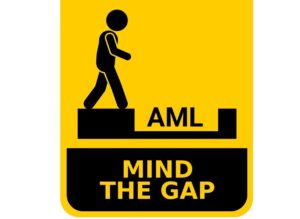Coadjute’s COO on the property market’s path to digitisation and how a lack of literature on the subject compelled him to write the book himself; Digital Bricks and Mortar – Transforming the UK Property Market.
How did Digital Bricks and Mortar begin for you?
I believe that digitisation provides the most promising path to resolving the UK’s dysfunctional property market and creating a system that truly serves the needs of consumers and businesses. I’ve been working towards this vision for years, leading innovative projects with HM Land Registry, the Bank of England, and major financial institutions, while also collaborating with industry stakeholders and speaking at events and conferences.
Through all of this, it became clear that we needed a comprehensive book that explains the concept of a digital property market; how it fits into the broader evolution of the UK property sector; and why it should matter to property professionals, mortgage experts, software vendors, policymakers, regulators, and anyone interested in the future of the market.
So, I wrote that book. It started in the form of blogs on individual topics related to very specific elements of the property market’s path to digitisation and it ended here with Digital Bricks and Mortar – Transforming the Property Market.
What is Digital Bricks and Mortar about?
My thesis is that the transition from today’s market to a fully digital market will have as profound an impact on businesses in the market and consumers as the arrival of the internet did in the early 2000s. The book explores the current state of the UK property market, the promise of digitisation, and the critical questions that remain unanswered about the implementation of a digital property market.
The book takes on challenging topics, including the supervision and regulation of a digital property market, the implications of emerging technologies such as AI, smart contracts, and the potential for a next-generation intelligent property market.
I believe we are on the verge of a wave of innovation triggered by digital assets, artificial intelligence, and what I call the “propertyverse”. I explain key concepts underlying this transformation, including data standards, digital identity, trust frameworks, and upfront information. The book therefore answers common questions like: “What exactly is the digital property market?” and “Who is responsible for building it, and who will fund its development?”
Who should read Digital Bricks and Mortar?
Digital Bricks and Mortar: Transforming the Property Market is meant for a range of audiences, including property professionals, mortgage experts, software vendors, policymakers, regulators, academics, and all other property market stakeholders. My goal was to create a reference manual that informs thinking and decision-making across the industry.
Informed and inspired by my three decades of experience in technology transformation and my years of work in the property market as founder and COO of Coadjute, I wrote the book to be both comprehensive and accessible. My aim was to document the current industry conversation and initiatives, connect the dots between various elements, and expand the discussion to include a forward-looking examination of innovative technologies.
Do you think you’ve done the property market justice?
I believe that the complexity of the property market and the rapidly approaching wave of innovation warranted a thorough examination, which is why I chose to write a book rather than stick to the series of blogs I had been writing over recent years. Many of these ideas I’ve been thinking about and discussing with industry peers for years, and I’m very grateful to everyone who has helped me gain this understanding of the property market.
Out Now: Digital Bricks and Mortar – Transforming the Property Market
To order John Reynolds’ book, Digital Bricks and Mortar, click on the title or head over to the London Publishing Partnership website or Amazon.


